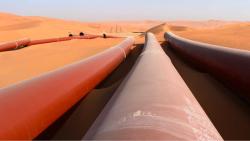
OR WAIT null SECS
© 2024 MJH Life Sciences™ and Turbomachinery Magazine. All rights reserved.
Optimizing compressor control systems
Control systems are the brain of the Process Plant. Their importance is well recognized, and, for this reason, the design and implementation of plant control systems are considered from the first design until the final start up stages. Medium and large plants may include many different process areas with different kind of machines. Each one of the involved processes may require special attention and precautions in order to render the best outputs and contribute to maximizing the overall plant performance. Despite their importance, it often happens that the plant control system may not be fully optimized.
In this paper we’ll restrict the focus to centrifugal compressors plants, introducing some main concepts applicable to the compression station control system. Furthermore, a case history shall be presented about the optimization applied by the IPC team on the plant control system.
Also, this paper will provide some interesting evaluation of benefits and estimation of the environmental impact.
Compression station control systems elementsEach compression station includes a station control system. This system is the array of all the devices devoted to managing, control and protecting all the plant physical assets, including machinery, piping, drivers, instrumentation, auxiliaries etc.
Controlling a compression station requires at least a couple of main tasks: assure an adequate machinery protection, and assure plant stability, meaning that the main plant parameters should be fluctuating, during operational time, within the expected operative range. Plant stability is then the result of the control system's ability to coordinate all the machinery and devices during the operational time. Plant stability allows to avoid unwanted phenomena as recycles and shutdowns that shall be better described later.
The following paragraph will give a quick recall of the main areas that make up a compression station control system.
InstrumentationAPI std 617 provides detailed indications about the compressor instrumentation. Onboard equipment should include vibration and temperature probes. Sensors are normally located in proximity of rotor bearings where vibration and temperature readings are taken and compared to alarms and trips. Field instrumentation assures that the machine will not operate outside the permitted range. Not only machinery but also process items (headers, scrubber, coolers, etc) are often equipped with sensors to detect potentially anomalous or even dangerous conditions. Instrumentation represents the base layer of the control system upon which all logic and control actions are based.
Control tasksOne of the main tasks is “load control”. This task provides for maintaining a mass balance between the gas coming into the station on the gas outgoing. This may appear as a simple task. The reality is more complex, and many problems are normally faced especially when the station has a less simple architecture such as in stations with many compression trains in parallel. The load control is usually carried out by acting on the speed of the driving motor (frequently a gas turbine for turbo-compressors) or by acting on the "throttle" valve in the case of constant speed drivers (frequently asynchronous motors for motor-compressors). It should be noted that the load control has the suction header pressure as process parameter. But the same suction pressure affects the flow in the anti-surge valve which is controlled by the anti-surge controller. If these two control actions should occur at the same time, they would influence each other, and the station could be destabilized by persistent oscillations, potentially triggering recycles and shut downs.
The situation is complicated by the fact that, in some circumstances, the anti-surge valves are used for load control and therefore adequate strategies are needed to accommodate these events, thus assuring overall station stability.
Other factors must also be considered for the purpose of system stability, such as the closing speed of the anti-surge valve, when and under which conditions the anti-surge valve closure should be permitted, how to manage the single compressor recycle when working in a compression train, how to manage more trains in parallel, and how to manage a compressor ramp up into the parallel and so on.
These considerations show how delicate and important is the compression station control system duty, and how it may require a high level of sophistication in case of non-trivial plant configurations.
Dangerous operative conditionsAmong critical operative conditions the surge deserves a special mention: It consists of a very quick inversion of the flow inside the compressor, which happens when the characteristic curve becomes unstable, i.e. when the derivative of the discharge pressure vs the flow approaches zero. Surge has a very destructive nature: the inversion of the flow causes high vibrations and violent axial displacements that overload the bearings. During the surge cycles the gas may achieve very high temperatures causing damage to the compressor parts.
Most of the times the actual operative conditions are different from design ones, consequently the identification of the compressor surge point becomes complicated because it requires the adjustment of the compressor performance curves at the actual off-design conditions. While this capability is provided by IPC software CMap, traditional systems are often still based on approximated methods that when implemented turn out to be quite conservative and set the protection thresholds quite far from the surge point. This often causes the compressor to enter the recycle condition even when not strictly necessary.
While this approach goes in the direction of machine safety, it causes, as a corollary, a higher impact both on financial and environmental point of view. In fact, during operation, plant instabilities may trigger the protection actions. The effect is that the compressor goes off-line and the gas incoming to the station is inevitably burned in the flare.
Recycles and shutdownsShutdowns are critical events that require the machine to be immediately stopped. This happens usually when some of the critical operative parameters exceed alarm values hitting the trip point. Of course, shutdowns represent a loss of money due to lost production during time intervals necessary to reset the system and re-start.
Re-cycles are recirculation of the compressed gas back from the machinery discharge to the suction side. The recycling of a centrifugal compressor is most often due to the triggering of the anti-surge valve emergency opening. This protection action is actuated by the control system when the operative flow becomes very near to the surge point (normally 1,03 of surge flow).
Also recycles have a great impact on the overall station productiveness since they require system reset, although compressors are not stopped. System reset requires human intervention for acknowledgment and problem understanding and is therefore time consuming. Recycles have a first step where the machine enters into protection mode (anti-surge emergency opening) and remains in this status until operator acknowledgement, and a second step were the machine recovers its load. Also recycles represent a loss of production because the gas continues to be flared until the completed machine reloading, causing a neat loss of gas production, a loss of energy for unnecessary compression power, a CO2 equivalent impact for this wasted energy and a very high impact for the CO2 injected in the atmosphere.
3-The case storyIn the case history considered in this paper, the compression station was made up of three independent compression trains (independent gas sources), with each train including two compressors in series. Each train was driven by a single fixed speed electrical driver. Each single compressor was equipped with its own anti-surge valve.
Before the beginning of the plant optimization project, the compression plant was affected by a high number of critical events, mainly recycles and shutdowns.
After an observation period dedicated to understanding the problems and the behaviour of the system, the IPC team decided to proposed to the plan management to move along the following main directives aimed at boosting plant stability:
- Evaluation of compressor performance, by comparing operational values to the OEM expected performance.
- Observation of plant dynamical behaviour with an understanding of the linke between the impact of plant parameters and machine operative performance
- Execute detail analysis of all the involved control system tasks and design of control tasks modification aimed at reducing or minimizing the appearance of critical events.
The directive A) was applied using the available field measurement data and applying to that the capabilities of CMap software, IPC commercial software for the prediction of centrifugal compressor performance.
CMap contributed largely to identifying compressor performance non-conformity and then to update control system settings for effective compressor operative conditions. The flexibility, reliability and quickness of the software contributed to obtaining a better picture of the overall system operational status.
Cooperation with the supervising personnel was decisive in obtaining an understanding of the observed dynamics and infer the dependencies of causes and effects in a reliable way. These activities helped in increasing the stability level of the compression system, reducing the number of recycles and shutdowns to a few events per year.
Financial and environmental impact of the optimizationsBefore the launch of the optimization project, the plant was affected by an average of 1 recycles per day per train with a duration of about half an hour per recycle.
In these transients each compression train was recycling about 40,000kg/h, with the overall station flaring about 72,000kg/day. The estimated loss through flared gas was about 4.6 million euros per year, including loss of production and accounting for cost of energy spent on recycles.
During recycles the train were wasting about 3 MW with an estimated loss of about a quarter of million euros per year due to unnecessary adsorbed electrical power.
Total loss: about 4.9 million euros per year.
From an environmental point of view the situation was even worse: the CO2 equivalent introduced in atmosphere for the unnecessary recycling power was about 1160 tons per year while the CO2 flared was about 70400 tons per year. CO2 equivalent for heat wasted by flaring was about 13500 tons per year.
Just for giving to the reader a rough idea of how much important this impact is, we could recall that this amount of CO2 would be equivalent to the amount of CO2 produced in a year by 42720 passenger cars. Another interesting comparison could be the one with wind turbines: about 18 medium size wind turbines (2.2MW) would be necessary to avoid the introduction in the atmosphere of the same quantity of CO2, at a cost of 40 million euros.
ConclusionsFollowing the history and data presented in this paper, one consideration emerges: all efforts towards any possible improvements of process plants control systems and for compression plant controls optimization strategies are justified from both a financial and environmental impact.
The adoption of advanced strategies for machinery monitoring and station control systems represents, from the financial point of view, a justified investment.
From the environmental point of view benefits are also more than evident: the gas industry, beyond the financial goals, bears also the moral responsibility for environmental compliance, and is therefore even more spurred to apply improvements and innovations on the control system area.
Knowledge of compression systems, application experience and the support of specialty machinery software tools as CMap can be therefore considered as valid support in reducing cost and impact on the environment.



